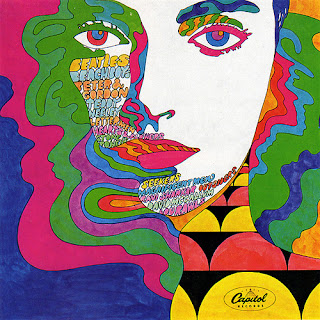Tuesday, March 29, 2011
Thursday, March 10, 2011
Tuesday, February 15, 2011
Design for a printing company by Piet Zwart 1930.
DaDa truly influenced this and this direction truly influenced how we see layout today. It was practically unheard of to use this type of visual in the time period just after WWI.
Hermann Eidenbenz - grafa international poster 1936
Beautiful poster from Swiss designer Hermann Eidenbenz. Hermann also designed the Clarendon typeface.
MOTOR COUNTER (1932) | Artist : OTTO BAUMBERGER (1889-1961)
International Automobile & motorcycle exhibition, Vienna (1930) | Artist : Hermann Kosel
Led by the best designers in the decorative arts such as fashion, and interior design, Art Deco affected all areas of design throughout the 1920s and 1930s, including architecture and industrial design, as well as the visual arts such as painting, the graphic arts and film. At the time, this style was seen as elegant, glamorous, functional and modern.Art Deco moved away from the soft pastels and organic forms of Art Nouveau and embraced influences from many different styles and movements of the early 20th century, including Neoclassical, Constructivism, Cubism, Modernism, and Futurism. Its popularity peaked in Europe during the Roaring Twenties and continued strongly in the US through the 1930s. Although many design movements have political or philosophical roots or intentions, Art Deco was purely decorative. Art Deco experienced a decline in popularity during the late 1930s and early 1940s, but experienced a resurgence in the 1960s
Thursday, February 10, 2011
1920's Graphic Design
This is an official soccer poster for World Cup in Uruguay, 1930.
The London Underground Electric Railway Company Ltd published this poster in 1924.
Lucian Bernhard: "Stiller“, 1908
Poster for Opel automobiles, by Hans Rudi Erdt,
Plakatstil was an early poster style of art that began in the early 1900s and originated out of Germany. First started by Lucian Bernard in 1906. Plakatstil means "poster style" in German. The traits of this style of art are usually bold, straight font with very simple design. Shapes and objects are simplified while the subject of the poster remains detailed. Plakatstil incorporated color combinations not seen in other art forms such as Art Nouveau. Plakatstil shied away from the complexity of Art Nouveau and helped emphasize a more modern outlook on poster art. Famous Plakatstil artists include Berliner, Lucian Bernhard and artist Ludwig Hohlwein.
Lucian Bernhard influential in helping create the design style known as Plakatstil, which used reductive imagery and flat-color as well asSachplakat ('object poster') which restricted the image to simply the object being advertised and the brand name. He was also known for his designs for Stiller shoes, Manoli cigarettes, and Priester matches
The London Underground Electric Railway Company Ltd published this poster in 1924.
Lucian Bernhard: "Stiller“, 1908
Poster for Opel automobiles, by Hans Rudi Erdt,
Plakatstil was an early poster style of art that began in the early 1900s and originated out of Germany. First started by Lucian Bernard in 1906. Plakatstil means "poster style" in German. The traits of this style of art are usually bold, straight font with very simple design. Shapes and objects are simplified while the subject of the poster remains detailed. Plakatstil incorporated color combinations not seen in other art forms such as Art Nouveau. Plakatstil shied away from the complexity of Art Nouveau and helped emphasize a more modern outlook on poster art. Famous Plakatstil artists include Berliner, Lucian Bernhard and artist Ludwig Hohlwein.
Lucian Bernhard influential in helping create the design style known as Plakatstil, which used reductive imagery and flat-color as well asSachplakat ('object poster') which restricted the image to simply the object being advertised and the brand name. He was also known for his designs for Stiller shoes, Manoli cigarettes, and Priester matches
Tuesday, February 1, 2011
Logo Research
From the research I have done most logos from the late 19th, early 20th century were type based and very decorative. There were some that were more image based, but they still included very decorative elements. Whether they were image or type based all were very flat. Logos continued to evolve they would stay simplified and loose the decorative elements. The type of media these logos would be found in had a lot to do with the actual designing of the logos. With modern day mass communication through media, logos are more elaborate and don’t appear flat. Type based logos have survived and done very well, Coke is one of the most recognized logos ever. Logos should always be simple and effective. They should be able to be placed in a number of different types of media as well should be legible at most sizes.
Subscribe to:
Comments (Atom)
























